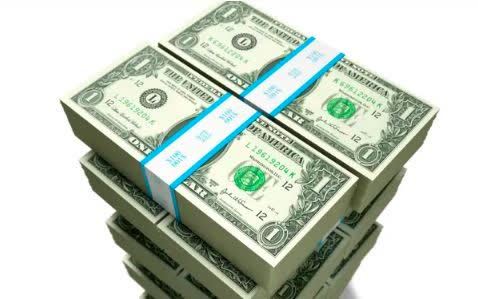Market Outlook: April 18, 2021
Market Outlook: April 18, 2021
This market update is exclusive to HDO subscribers.
The equity markets continued their spectacular non-stop rally, with both the S&P 500 and the DOW index closing at record highs on Friday. The indexes are just going through every resistance level without looking back. This is "unseen" in recent market history, and I will give my views on it later.
As noted in my earlier market outlooks, there are a lot of tailwinds driving this market, and one of them is the U.S. economy. Just this week, a batch of stronger-than-expected economic data and corporate earnings results helped fuel the markets higher.
What can be noted from the current market leaders is that they consist mostly of economically sensitive stocks, including those that are cyclically oriented. They have been strongly outperforming the rest of the market. These are the stocks and sectors that we have been targeting and that we are currently overweight in our "model portfolio". I expect that this trend will continue throughout the year.
Here I would like to touch again on questions that I keep getting from some of our members: Why are we buying stocks that "look expensive" such as NEWT (NEWT), ARCC (ARCC), ECC (ECC), OXLC (OXLC), or PTY (PTY)? This is because they are economically sensitive and their expected fast growth will more than compensate for their current valuations. If you buy them today, "at the current prices", they will look cheap in a few months as growth kicks in. You would be locking in a great yield at a good price. This is why their prices keep going higher week after week.
Going back to the Economic Outlook
This week, we got a slug of economic data from Jobless Claims, Retail Sales, Empire State Manufacturing, and the Philly Fed Manufacturing. They all came in much stronger than expected.
Unemployment claims declined to the lowest level since the coronavirus pandemic struck last spring, adding to signs the U.S. economic revival is picking up speed. Jobless claims, fell to 576,000 last week from 769,000 a week earlier. That is the lowest weekly figure since March 2020. While they remain higher than the pre-pandemic levels of around 220,000, economists expect they will continue to drop as the recovery accelerates.
GDP could reach 10% this year. Economic data will continue to get better and better and better as the economy opens up.
Goldilocks Moment For the U.S. Economy
As referred to in my update last week, we are heading into a "Goldilocks moment" secular bull cycle for equities this likely to last until year-end 2022 at least, and possibly into the year 2023. The tailwinds being strong consumer savings, extensive stimulus plans, the Biden administration’s $2.3 trillion infrastructure plan, a very accommodative Fed policy, and interest rates that remain near their all-time-lows (despite the recent spike in their long-end). The risks for the end of this bull markets are:
- Significantly higher inflation, which is unlikely to happen before the end of 2023 or 2024.
- An abrupt change in Fed policy.
- Another "black swan" scenario such as COVID.
All three scenarios are unlikely to happen.
The 4th risk is a significant hike to corporate taxes. Here I see it unlikely that the current administration would hike taxes that would undo all the stimulus and jeopardize the economic recovery that it is seeking. The current proposed plan is to have unified global taxation for multinational corporations at a rate of 28%. This is unlikely to happen. My personal views are that the administration will remove incentives (or even tax U.S companies) that move factories outside the United States, and opt for a smaller corporate tax hike. Furthermore, funding for the infrastructure plan could be done via special bonds, such as "Build America Infrastructure Bonds". President Biden clearly said that he is open to negotiations on corporate taxes. I do not see a significant risk here either.
Therefore my longer-term views for the equity markets are very bullish and we rarely see such an opportunity for the potential of big returns over the next two years.
Unstoppable Market Rally Has Got Analysts Scratching Their Heads
I have been reading several reports from prominent market analysts, and many seem to be puzzled about this unrelenting market rally. Why the markets are not seeing any meaningful volatility, and blowing through "technical resistance" levels, and never looking back? Other analysts have been warning for several months of market pullbacks and/or market dips that never happened...
 Yet the explanation is quite simple: It is liquidity that is the ultimate driver of equities, and we have been swimming in liquidity for several months now.
Yet the explanation is quite simple: It is liquidity that is the ultimate driver of equities, and we have been swimming in liquidity for several months now.
I have been referring to the "bubble of cash" sitting on the sidelines over the past six months. Since early January 2021, it was estimated that there were $6 trillion dollars in investments sitting in either cash, CDs, or Money Markets, earning next to nothing. You can add to this that excess savings by U.S. consumers, following stimulus checks, climbed from $3 trillion in January to about $4.5 trillion. I was expecting that a big part of this money to move to equities as investors feel more confident about the prospects of an economic recovery, and this is exactly what is happening today. This "cash on the sidelines" is pouring into U.S. investments.
In fact, it was quoted on Barron's:
A continued strong rollout of Covid-19 vaccines in the U.S. and President Joe Biden‘s $1.9 trillion infrastructure package may be encouraging those usually more cautious investors into stocks, even if markets have been struggling to reach new records lately.....The analysts expected to see that followed by a period of hibernation for those investors. Instead, average daily purchases of U.S. securities reached $1.2 billion on Apr. 6, then $1.5 billion on Apr. 7, more than doubling a low of $772 million on Mar. 26.
So clearly, money is pouring into equity, and this perfectly explains why the markets are going up non-stop. These investors have a lot of cash that they want to put to work, and they are doing it at the same time, driving the markets up in a straight line. When this happens, the technical analysis does not apply anymore, nor do the algorithms (and related day-traders) that work around these technical levels have any significant impact.
Where is the 'Cash on the Sideline' Being Invested?
While we do not have detailed data on this front, we know one thing for sure. A lot of this money is being funneled to large passive ETFs such as:
- The S&P 500 index (SPY), or the Nasdaq ETF (QQQ).
- The corporate bond ETFs such as the Investment Grade Corporate Bond ETF (LQD) with a yield of 2.7%
Dangers of Buying into Passive ETFs
On the danger of buying large ETFs, I will address equity ETFs and Bond ETFs separately.
- Equity ETFs such as SPY and QQQ: All these cash inflows into these ETFs end up building a bubble for just a few stocks. Furthermore, buying into a passive index does not mean you are buying into the best-positioned companies to profit from this specific economic or market situation. You are taking the risk of buying expensive stocks that may or may not be performing well. Finally, in the case of a market bubble, the most expensive stocks tend to take the biggest hit.
- Corporate bond ETFs: It is mind-blowing that some investors are buying into the investment-grade corporate bond ETF (LQD). In fact, according to Barron's, LQD saw the largest cash inflow among all ETFs. The reason why I find this intriguing is that LQD has a duration of 10 years, similar to the 10-year Treasury, and therefore carries exactly the same duration risk. The 10-year Treasury took a huge hit over the past month due to mounting concerns about inflation and rising interest rates. We are in a bear market for longer-term bonds, and this is probably just the beginning. For 2.6% yield, LQD is likely to be a big money loser as inflation picks up.
What Comes Next?
The current bull market is supported by tons of liquidity. However, this liquidity is not constant and can fluctuate depending on the seasons. I expect that starting end of May, stock market activity will slow down. Also during the summer season, many institutional investors, and much of the older generation wealthy investors will be on holidays, and this will likely create some turbulence in the markets. I would not rule out a pullback in the magnitude of around 5% over the next 5 to 6 months. However, if it happens, I fully expect that this pullback would be short-lived and that this bull market will continue to see newer highs. Any pullback should be considered a buying opportunity.
Best Course of Action
The markets remain very bullish over the next two years, with outsized returns. My best recommendations are:
- If you are already invested, it is best not to lighten up or take profits. Do not try to time this market, do not worry about any short-term pullback if we see one over the next few months. Keep a long-term view while you collect these high dividends. This is what we are here for! The capital gains should continue to accumulate, and we should have total returns that will beat all major indexes over the next 24 months.
- If you still have some cash to put to work, I would suggest buying slowly, by adding equal amounts every month. This also applies to new "buy alerts".
Here, I would like to point out that I am not giving individualized advice because I do not know your specific financial situation or your risk tolerance. However, I am highlighting what I would personally be doing facing such a situation today.
 I am very excited about being an investor in this particular period of the economic boom, and particularly about the prospects of our high dividend stocks. Wishing you all a happy weekend.
I am very excited about being an investor in this particular period of the economic boom, and particularly about the prospects of our high dividend stocks. Wishing you all a happy weekend.
Good investing,
Rida MORWA
Disclosure: I am/we are long our "Core Portfolio" + our “Preferred Stock Portfolio” + SCCB + ECCX + GEO bonds.



